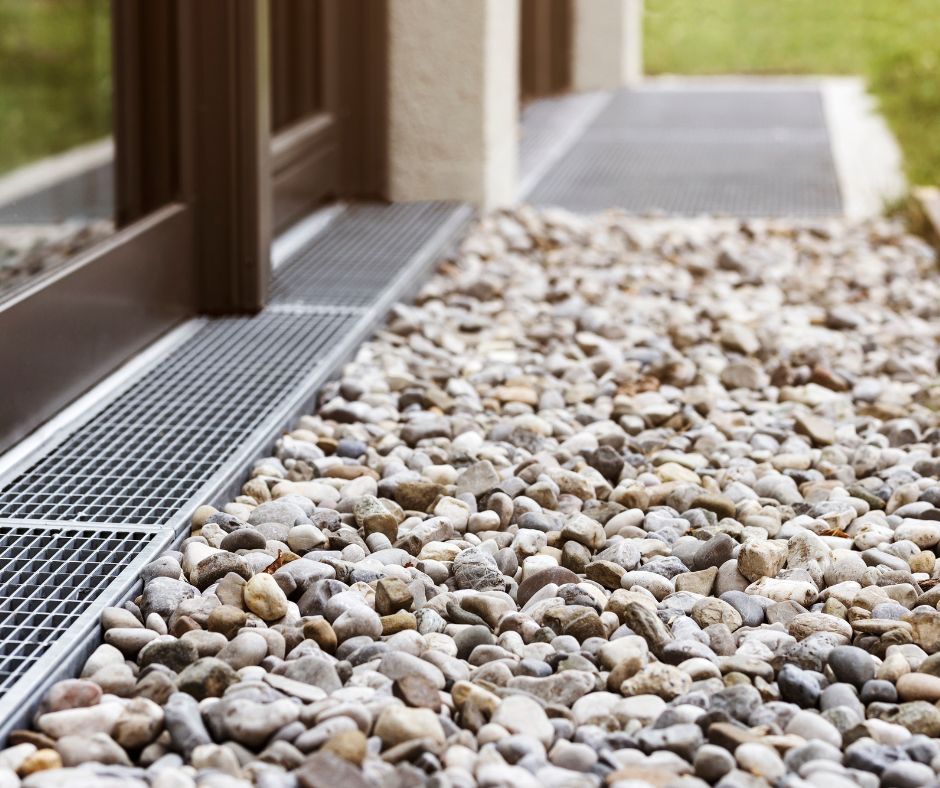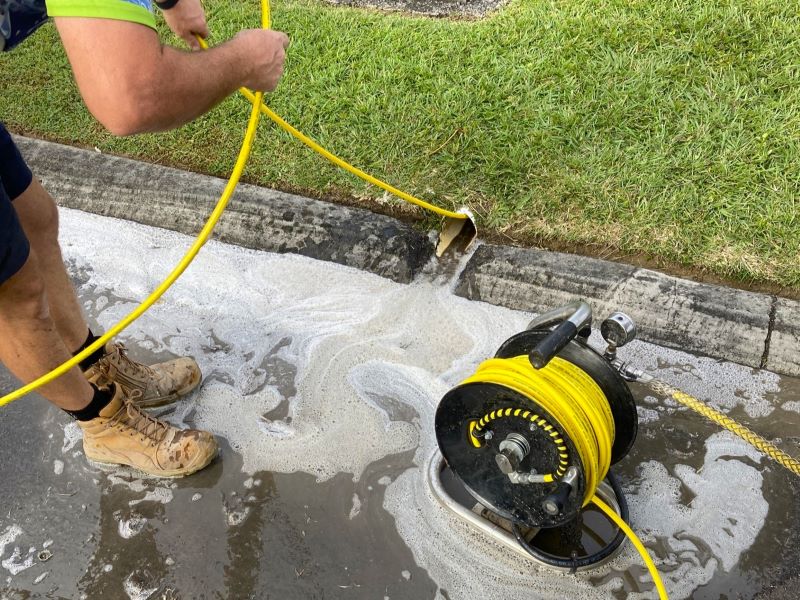Stormwater drainage systems are essential infrastructures that encompass a variety of components, including roof plumbing drainage, French drains, spoon drains, and strip drains. These systems are crucial for safeguarding your property against water damage while effectively managing stormwater runoff during heavy rainfall. Regular maintenance is not just recommended; it is essential, as neglecting these systems can lead to severe consequences, such as drain blockages and potential flooding. Whether your challenges include clogged grates, intrusive roots in your pipes, or damaged plumbing systems, staying ahead with proactive maintenance can significantly reduce the risk of future complications and costly repairs. Understanding the principles of proper maintenance is vital for protecting your home and ensuring the longevity of your drainage systems.
This comprehensive guide offers valuable insights into maintaining your drainage systems effectively and provides practical steps to take in the event of a blockage.

Effective Maintenance Techniques for Traditional Stormwater Drain Systems
Traditional stormwater drains are critical features for most properties, expertly directing rainwater away from your home and preventing potential flooding. However, these systems can become clogged over time due to various debris, including leaves, dirt, and branches, which can significantly impair their performance. To ensure that water flows freely and does not pool near your property’s foundation—potentially leading to severe structural damage—consistent maintenance is imperative. By creating and adhering to a regular upkeep schedule, you can prolong the lifespan of your drainage systems and enhance their operational efficiency, especially during heavy rainfall events.
Essential Maintenance Tips for Traditional Drains:
- Regularly clear the grates and gutters: Actively prevent water flow obstructions by routinely removing accumulated leaves and debris, particularly after storms when the buildup is most significant.
- Monitor for pooling water: Keep a watchful eye for signs of water backing up or pooling around your drains, as these may indicate a blockage. Additionally, check for soggy patches in your garden, which could signal deeper drainage issues that must be addressed promptly.
- Engage professional services: Schedule routine inspections and cleanings with a qualified plumber, such as Creek to Coast, to ensure optimal drain performance and avoid future complications.
Optimal Practices for Maintaining French Drain Systems
French drains provide critical assistance in redirecting groundwater away from your home and retaining walls, making them indispensable for effective moisture management. However, these underground systems require consistent care to prevent blockages. Comprised of gravel and a perforated pipe, French drains excel at facilitating efficient water diversion; however, they can become clogged with dirt, sediment, and even invasive roots over time. Implementing proper maintenance practices is essential for ensuring their longevity and operational efficiency, thereby preventing complications that could lead to expensive repairs.
Key Maintenance Guidelines for French Drains:
- Watch for slow drainage: If you notice that water is not draining correctly, this may signal a clog that requires immediate attention to prevent further complications.
- Regularly flush the system: Periodic flushing with water can help clear away potential blockages before they escalate into severe problems that disrupt the drainage process.
- Seek professional cleaning services: If you observe sediment buildup or root intrusion, reach out to Creek to Coast for thorough cleaning, potentially utilizing hydro-jetting equipment to effectively clear the pipes or inspection points.
Essential Maintenance Practices for Spoon Drain Systems
Spoon drains are designed with shallow, curved channels that efficiently guide surface water away from driveways, patios, and other paved surfaces. Although these drains typically require minimal upkeep, regular attention is essential to prevent clogging. Neglecting to clear these channels can result in water pooling on your property, leading to potential damage over time. By adopting simple yet effective maintenance habits, you can ensure that your spoon drains remain functional and effective, safeguarding your property against water-related issues.
Maintenance Guidelines for Spoon Drains:
- Keep the channel debris-free: Regularly sweeping out leaves, dirt, and other materials will help maintain smooth water flow. Utilizing a high-pressure washer can be particularly effective for thorough cleaning.
- Check the slope: Ensure that the slope of the spoon drain is intact and functioning correctly, as gravity is crucial in directing water away from your property.
- Inspect for damage: Regularly examine the drain for any cracks or breaks, which can be compromised by vehicle traffic and may necessitate repair.
- Seek professional evaluation: If you notice any signs of poor drainage, it may be time to contact Creek to Coast for a professional assessment to make necessary adjustments or repairs for optimal performance.
Critical Steps for Maintaining Linear Drain Systems
Linear drains, also known as trench drains, are strategically installed in areas such as driveways and pool decks to efficiently capture surface runoff. While they are effective in preventing water accumulation, they can gather debris over time, making regular cleaning imperative to maintain their effectiveness. Establishing a consistent cleaning routine is crucial for preventing blockages that can lead to water pooling and damage in surrounding areas, ultimately ensuring their performance and longevity.
Maintenance Tips for Linear Drains:
- Frequently clean the grates: Regularly check the grates for any buildup of dirt, leaves, or debris that could obstruct water flow, and remove these blockages as needed to ensure proper drainage.
- Regularly flush the system: Running water through the drain routinely will help verify that it flows correctly and that no blockages are present.
- Consider professional maintenance: If you encounter backups or slow drainage, don’t hesitate to contact Creek to Coast for expert cleaning services to effectively remove deep clogs and debris.
Immediate Actions to Take When Facing Blocked Drain Systems
Even with diligent maintenance, blockages can still occur in any drainage system. Signs such as water pooling, slow drainage, or overflowing grates indicate that immediate action is necessary to prevent more severe complications. By recognizing the common causes of blockages, you can identify the issue and take effective measures to resolve it efficiently.
Common Causes of Blockages Include:
- Tree roots: Roots can invade underground pipes, creating significant blockages that disrupt water flow and drainage.
- Accumulated debris: Leaves, dirt, and other environmental materials can build up over time, obstructing water passage through your drainage system.
- Pipe damage: Broken or crushed pipes can severely restrict water flow, necessitating immediate professional intervention to prevent further damage.
When faced with a blockage, it is advisable to consult a professional plumber like Creek to Coast. They utilize advanced tools, such as high-pressure water jetters and CCTV cameras, to accurately diagnose and resolve the issue. Attempting to clear a blockage on your own can worsen the situation, especially if the pipes are damaged or roots have infiltrated the system.

Holistic Strategies for Maintaining Diverse Stormwater Drain Systems
To ensure that your stormwater management systems—whether traditional, French, spoon, or linear drains—function effectively, consider implementing the following holistic strategies:
- Schedule annual inspections and cleanings: Partnering with a licensed plumber like Creek to Coast will help you proactively remove debris and identify potential problems before they escalate into major issues.
- Monitor water flow: After heavy rainfall, inspect your drains for pooling or slow drainage, which could indicate underlying issues that require immediate attention.
- Install gutter guards and grates: These devices help prevent larger debris from entering your drains, thereby reducing the frequency of blockages and the need for maintenance.
- Maintain distance from plants and trees: Roots from nearby trees can invade and obstruct pipes, making it essential to keep vegetation at a safe distance from your stormwater systems to avoid future complications.
Regular plumbing maintenance and timely responses to drainage issues are crucial for protecting your property from water damage and ensuring that your drainage systems operate smoothly and efficiently. If you notice any signs of blockage, do not hesitate to reach out to Creek to Coast for expert assistance in keeping your stormwater drains flowing seamlessly!
The Article: Stormwater Clarity: Essential Drain Maintenance Tips first appeared on https://writebuff.com.
The Article Drain Maintenance Tips for Stormwater Clarity Was Found On https://limitsofstrategy.com


7 Responses
It’s great to see a discussion on stormwater drainage systems, as they play such a critical role in our infrastructure and can often be overlooked until a problem arises. I remember having issues with water pooling in my yard during heavy rainfalls when I first moved into my home. I quickly learned the importance of having a well-maintained drainage system.
It’s funny how we can go through life, blissfully unaware of the little things lurking beneath our yards until they decide to throw a pool party, right? Sounds like your yard was auditioning for a role in a new reality show: “America’s Got Flooding.” Seriously, though, water pooling is one of those sneaky nuisances that can really sneak up on you, especially if you’re not equipped with a solid drainage plan.
It’s insightful to hear about your personal experience with stormwater drainage and the challenges that can arise. Water pooling in your yard is a common issue, and it often highlights just how crucial our drainage systems are, especially in urban areas where natural drainage is disrupted by development. It’s interesting to note how quickly we realize the importance of these systems when faced with a problem directly affecting our property.
You hit the nail on the head about the trials of water pooling. It’s like Mother Nature’s own version of a surprise party, where the surprise is a flooded yard and the guests are all those little wading birds that decide to move in. Seriously, one day you’re admiring your lawn, and the next, you’re wondering if you should start charging admission to your newly christened “pond.”
It’s interesting you mentioned that experience with water pooling—it really highlights how often we take drainage systems for granted until they become a problem. When I first encountered a similar issue in my yard, I was surprised by how quickly things could escalate; just a few heavy rainfalls turned a minor inconvenience into a headache. It seems like a lot of homeowners don’t realize the importance of regular maintenance until it’s almost too late.
Your post sheds light on an often-overlooked aspect of home maintenance that carries substantial long-term implications. I’ve had my fair share of challenges with stormwater drainage, particularly when I neglected regular inspections, leading to blocked drains that turned a heavy rain into a mini flood in my basement. It’s such a painful experience that many homeowners might not truly appreciate until it’s too late.
This topic hits home for me, as I recently faced a flood in my basement due to neglected stormwater systems. It’s incredible how many people overlook the importance of maintenance until something goes wrong. You mentioned the various components of stormwater systems, and I can’t stress enough how crucial it is to regularly inspect and clean out each part, especially those French drains that can easily become clogged with debris or roots over time.